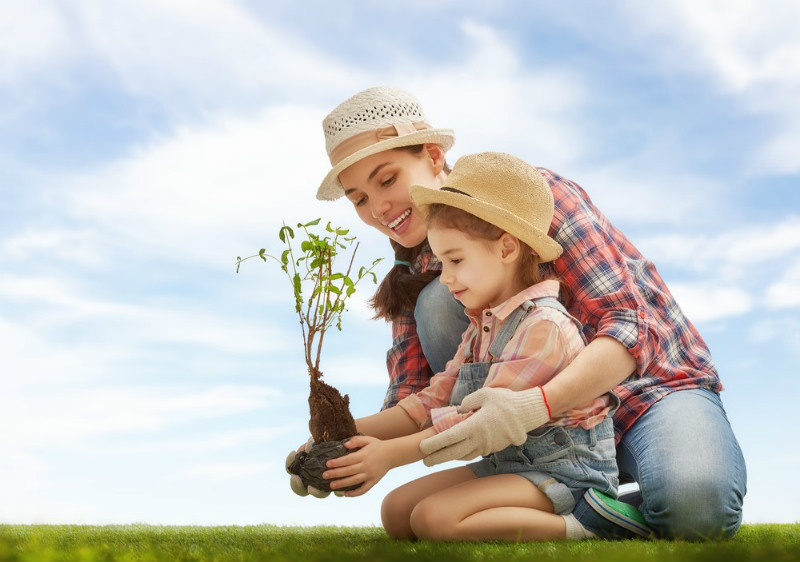Do you want your kids to value the garden as much as you do? This might sound difficult to accomplish, especially in the age of smartphones and video games constantly seeking their attention. However, all it can take to get them playing in your garden is a little patience and creativity.

With these easy gardening projects for kids, parents and teachers alike won’t have a hard time getting children’s hands dirty as they discover the wonders of nature without going into the wilderness. Check them out below.

1. Simple Bird Feeder
To accomplish this project, you must prepare the following materials: a decently sized pinecone, seed butter, some strings, and birdseed. First, the pinecone should have a string tied to its top section. Next, take a bit of seed butter and spread it on the outer section of the pinecone. This will keep the birdseed attached to it.
Next, apply some birdseed all around the pinecone until it is virtually covered with them. Lastly, let the pinecone hang to a tree or place it in an area above ground for the birds to reach. Soon, you and your kids will see birds of various kinds eating seeds right in your garden.

2. Private Garden Bed
We all know that kids can prove to be quite territorial and possessive, especially with their toys. One way to make them enthusiastic about a garden is to give them their own space. Get a raised garden bed and tell your kids that it will be theirs to take care of.
Let them pick the vegetables and flowering plants they want in their garden bed. If they don’t know the names of the plants, you can provide them with pictures or even virtual snapshots of various flowers and vegetables that are readily available in your area. Furthermore, make sure that the choices involve plants that quickly grow so that children can easily see development with each passing day.
3. Single Container Vegetable Garden
For this children’s gardening project, you must have a sizable container with holes at the bottom for draining water. In addition, you must have potting soil, some vegetable seeds, and you should pick a location that gets enough sunlight every day.
The first step is to tell your kids to identify locations in the container by looking at the amount of sunlight they get. For example, one location could receive eight hours of sunlight while another area in the container only gets four hours. Let them take note of these locations by writing or illustrating them.
Next, begin to put potting soil inside the container. About one-quarter of the container should still be empty once this step is done. Afterward, the kid should plant vegetable seeds in each of the identified locations in the container. Lastly, tell them to take note of the changes and differences among the growing plants each day. This will train them to be observant and inquisitive.

4. Bug Collection
If your garden regularly attracts insects, birds, and bugs of all sorts, this should be a fun and worthwhile project for you and your kids. All you really need are some bug catchers. Once the kids have their own bug catchers, let them roam your garden to search for all of the bugs they can find. Not only will this give them a little exercise but it will also improve their focus.
Once they have collected the bugs, you can help them identify their names and what their benefits or harmful effects to your garden are. After this, you can let your kids release them back to the garden.
5. Sunflower House
Finally, your kids can create their own natural home with a sunflower house in your garden. While they do not grow in full in a single night, kids can easily see the increase in inches. In order to grow a sunflower house, you must have a variety of the flowering plant to grow. You can try the huge Russian Mammoth sunflower and mix them with dwarf sunflower variants.
The sunflowers should be planted in such a way that they make a circle or a square with an area of at least 25 square feet. They should be planted two feet apart, and there should be an empty section measuring four feet to serve as the entrance. To have a natural roof made of plants, tell your kids also to plant vines that will eventually be tangled with each other above the sunflower plants. Once it this sunflower house has grown enough, your kids can use it as their base to keep toys and to rest in.
With these gardening projects, your kids will surely see the fun in having a garden. From identifying birds and bugs to having their own garden beds and sunflower houses, getting children interested in gardening isn’t all that hard in reality.
